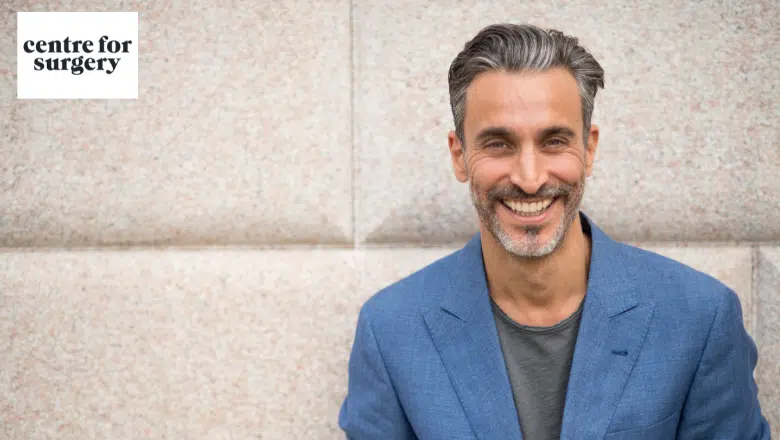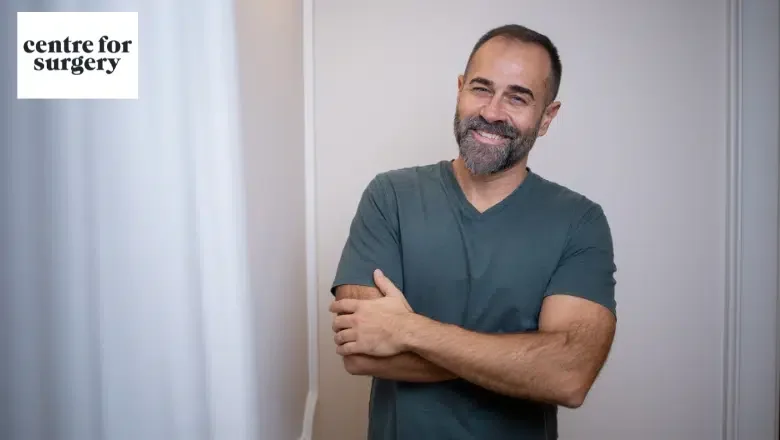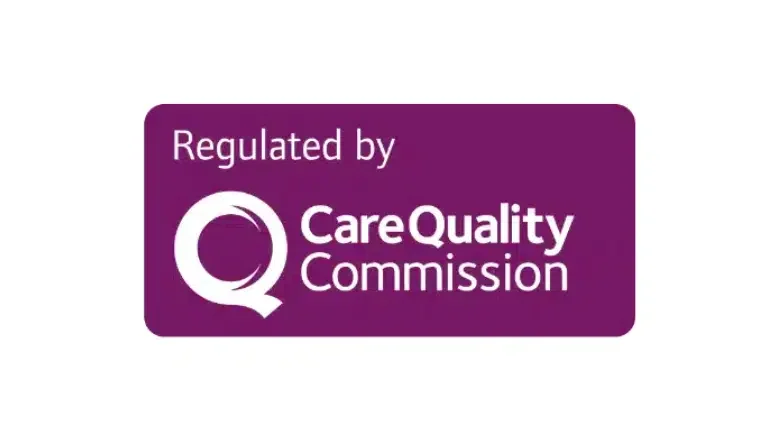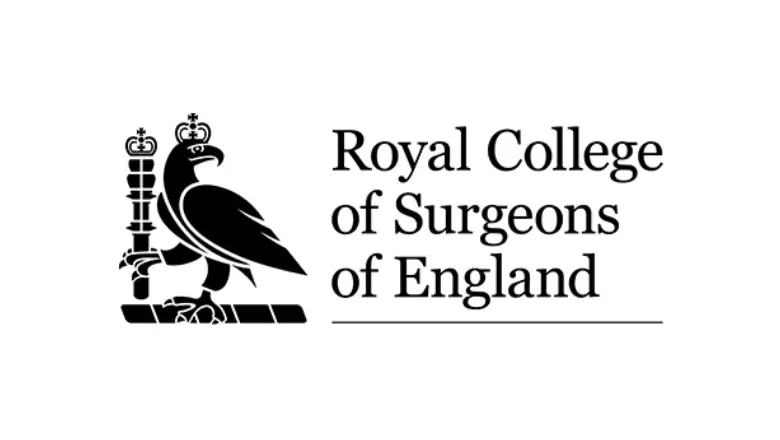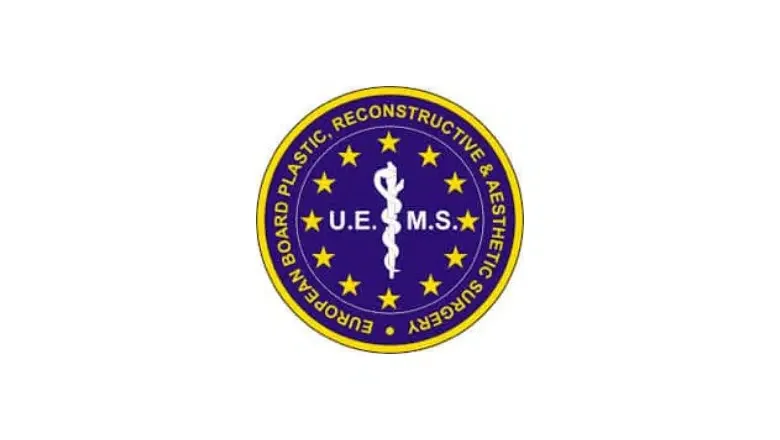Male Facelift Surgery London & UK
Facelift for Men – Male Facelift in London at Centre for Surgery
Male facelift surgery is designed to address the signs of ageing commonly found in older men. The natural ageing process results in the development of lines, wrinkles and sagging skin. A facelift can help to lift sagging skin and give a more youthful and refreshed appearance. Although facelifts have traditionally been more commonly carried out in women, men have formed an increasingly higher proportion of overall facelift patients in the last few years. Facelifts for men have increased by over 30% over the last three years in the UK. The most popular technique for a male facelift is the mini facelift.
RELATED: Can Men Benefit from a Facelift? Exploring the Options
Facelift surgery in men involves different surgical techniques compared with women due to the different structure of a man’s face. The bones that make up a man’s face are often thicker and with heavier set facial features. Centre for Surgery is known for its expertise in surgical facelifts for men, and each male facelift procedure is precisely customised to the anatomy of each man’s face. Facelift surgery in men focuses on achieving a well-defined jawline and chin without adding extra volume to areas of the face which may result in facial feminisation. Men typically present with bags under the eyes, loss of volume in the temple area and the formation of jowls along the jawline.
A surgical facelift can effectively address signs of ageing with results that can last in excess of 10 years. Male facelift surgery produces results that are considered permanent. It is important to remember however that the ageing process is continuous and the procedure does stop ongoing ageing. However, adopting healthy lifestyle habits including limiting exposure to strong sunlight and stopping smoking will help to maintain the results of a surgical male facelift for longer.
RELATED: Can I have a mini facelift?
There are three different types of facelift surgery for men carried out at Centre for Surgery in London. The most appropriate treatment option will be determined once you have an in-depth consultation with an expert consultant plastic surgeon at our state-of-the-art facility on Baker Street in Marylebone.
What is a Male Facelift?
A male facelift is a tailored version of the traditional facelift procedure, specifically designed to address the unique facial ageing concerns of men. Like a standard facelift, a male facelift aims to rejuvenate the face by reducing the appearance of deep wrinkles, sagging skin, jowls, and other signs of ageing. The goal is to create a more youthful and refreshed appearance while preserving the patient’s natural masculine facial features.
There are some key differences in the approach to a male facelift compared to a female facelift, including:
Incision placement
In male patients, the incisions may be placed differently to accommodate facial hair and sideburns, ensuring minimal visible scarring and preserving the natural hairline.
Skin thickness
Men typically have thicker skin than women, which may require specific techniques during the procedure to achieve the desired lift and tightening effect.
Facial structure
Men generally have more robust and angular facial features than women, and the male facelift aims to preserve these masculine characteristics while providing a rejuvenated appearance.
Anatomical differences
Men have a more extensive blood supply in the facial area, which may increase the risk of bleeding during the procedure. Skilled surgeons take this into consideration and utilise techniques to minimise such risks.
How does a men's facelift differ from women?
The structure of the male face is fundamentally different from that of a female. Men often have more pronounced jawlines and chains with heavier set browse and larger foreheads. Noses in men are often larger and they also have thinner lips. These general facial characteristics apply to the vast majority of men. The differences in facial structure mean that facelifts for men must be performed in a different manner to that carried out for women. The density of the facial bones is higher in men with thicker bones and more pronounced bony ridges. Facelift surgery is, therefore more technically challenging to perform in men, particularly in those who have thicker skin in the lower face and neck area. Facelifts for men most commonly target the lower part of the face and neck for effective facial rejuvenation.
RELATED: What is a mini facelift?
Loose skin is often one of the earliest signs of ageing in men due to declining levels of collagen in the skin. This results in a loss of skin elasticity leading to the appearance of sunken cheeks and jowls along the jawline. Men often have a more defined jawline compared with women, with a more pronounced angle of the jaw. Male facelifts are highly effective for getting rid of these common features of ageing in men in a single surgical procedure. An expert facelift surgeon must be cognizant of certain aspects of facelift surgery in men. It is important to avoid surgical removal of too much soft tissue and to avoid over-tightening the skin, which may result in an unnatural look.
RELATED: What is the Best Age for a Facelift?
Many factors may result in accelerated facial ageing in men including excessive sun exposure and smoking. Facelifts for men are ideal for smoothening out fine lines and wrinkles and getting rid of saggy skin for a more defined jawline and chin. Positioning incisions for a male facelift differs from a woman’s due to the thicker facial hair found in men. The distribution of facial hair must be respected by placing incisions in natural skin faults where possible. If an incision is placed incorrectly, it may result in abnormal hair growth or absent hair growth which may increase the visibility of facelift scars. Male facelift surgery is specifically designed to produce a masculine appearance without feminisation of the face. Some men may choose to have extra volume enhancement as part of a gender surgery procedure.
In most cases, any fat grafting to the face is minimal to reduce the risk of feminising a man’s face. If fat injections are carried out, it is important not to over-inject the cheeks or excessively lift the brows.
Centre for Surgery is home to some of the leading facelift experts in the UK with specialised expertise in men’s facelift surgery. Once you have had a consultation, your surgeon can provide customised recommendations on the most appropriate treatment. Give us a call today at 020 7993 4849 to book a consultation at our specialist clinic in Marylebone.
Preparing for a Male Facelift
Before undergoing male facelift surgery, it is essential to take the following steps to ensure a safe and successful procedure:
Discontinue aspirin
Stop taking aspirin and other blood-thinning medications at least one week before surgery, as they can increase the risk of bleeding during the procedure. Consult with your surgeon for specific instructions regarding medication adjustments.
Wash your hair
Shampoo your hair the night before the operation to maintain cleanliness and minimize the risk of infection.
Quit smoking
Stop smoking at least two weeks before the surgery, as nicotine can impair blood circulation and negatively affect the healing process.
Follow preoperative instructions
Your surgical team will provide you with specific instructions on how to best prepare for your facelift procedure. This may include taking prescribed medications, such as antibiotics and pain relievers, before the surgery.
Fast before surgery
Avoid eating or drinking anything for at least 6 hours before the procedure, as this helps your body respond well to the anaesthesia and medications used during the surgery.
Arrange for transportation and assistance
Make sure you have someone to drive you home after the surgery and stay with you for at least the first night, ensuring your safety and comfort during the initial recovery period.
What does a male facelift involve?
Centre for Surgery offers the full range of male facelift options and treatment is always customised to the needs of the individual patient.
Full facelift (rhytidectomy)
Traditional full facelift surgery for men is designed to address severe signs of facial ageing including extensive wrinkles, deeper nasolabial folds, prominent jowls, hyperpigmentation and loose neck skin. A full facelift involves making larger incisions that often extend into the hairline. These incisions may be visible once they have healed and any facelift scarring is often visible compared with a mini facelift.
SMAS facelift
The SMAS or superficial musculoaponeurotic system is a layer of fibroconnective tissue located beneath the skin. The SMAS is tightened as part of a SMAS facelift to improve skin laxity in the lower part of the face and is particularly useful for men with jowls. This procedure is commonly combined with fat transfer to the face for men who would like to enhance cheek volume.
Deep plane facelift
Deep plane facelift surgery is designed to produce results that can last in excess of 10 years. Surgical dissection occurs at a deeper level to reposition soft tissues of the face and is ideal for men with severe degrees of facial ageing. Although recovery is longer after a deep plane facelift than other techniques, the achievable results are often worth it.
Mini facelift
A mini facelift is an advancement on the traditional technique for performing a facelift and is considered to be minimally invasive with the ability to tighten the skin and soft tissue in the lower part of the face. Men who have extensive jowls and jawline laxity can achieve a chiselled and more well-defined jawline and lower face with a mini facelift. Mini facelift surgery is commonly combined with other complementary procedures, including chin augmentation using chin implants or facial fat transfer to achieve a more masculine look.
A mini facelift is also known as a lower facelift and is the preferred technique for men’s facelift surgery. The procedure is often combined with other complementary treatments, including eyelid surgery to remove bags under the eyes. Treatment can also be combined with non-invasive procedures, including dermal fillers and Morpheus8, to enhance soft tissue quality without the incisions and scars of traditional surgery.
One stitch facelift
One stitch facelift is ideal for men with early signs of ageing and is a great option for a male facelift. Treatment is aimed at younger men below the age of 45 and can produce results that can last in excess of five years. One stitch facelift is a minimally invasive procedure with short incisions and virtually invisible scars. The procedure is designed to address signs of ageing found in the middle part of the face, from the upper lip extending upwards to the cheeks to just below the eyelids. The middle part of the face is often where the earliest signs of ageing appear, including nasolabial folds and lower eyelids that appear hollowed out.
One-stitch facelift surgery can enhance a man’s masculine appearance by getting rid of excess tissue and improving the appearance of sunken cheeks. Enhanced results can be achieved when a one-stitch facelift is combined with a neck lift and chin augmentation for a chiselled jawline and a stronger-looking chin.
The recovery period after a one-stitch facelift is much shorter compared with a mini facelift, which takes no more than 45 minutes to perform. Many men who have a one-stitch facelift find they are less likely to require extensive facelift surgery later on.
Our aesthetic practitioners are also experts in performing non-surgical facelifts for men, which involve customised treatments to refresh and rejuvenate a man’s face without the need for invasive surgery.
Recovery after a Male Facelift
Following a male facelift, bandages will be applied to your face for the initial 24 hours and will later be replaced with a lighter dressing. Swelling and bruising are common during the recovery period, but your surgeon will strive to minimise these effects by possibly avoiding drains. You’ll be instructed to keep your head elevated after the procedure to encourage proper healing.
Your surgeon will schedule follow-up appointments to monitor your recovery progress. The first follow-up typically occurs one to two days after the surgery. These appointments are crucial for tracking your healing, removing stitches, cleaning incision sites, and changing bandages. Your surgeon will provide personalised guidance on when to resume activities such as exercise and showering, as each individual’s healing process varies.
What are the risks of men's facelift surgery
Facelift surgery for men is a safe procedure when performed by a skilled consultant plastic surgeon at Centre for Surgery. As with any type of surgical procedure, there are certain side effects to be aware of after male facelift surgery including:
- Bruising and swelling
- Temporary numbness
- Small degree of scarring
There are certain risks involved with carrying out facelifts for men. The risk of such complications can be minimised by following your surgeon’s post-operative instructions in full. Risks include:
- Bleeding
- Haematoma formation (a small collection of blood beneath the skin)
- Infection
- Would breakdown
- Excessive scarring
- Pixie ear deformity
- Hairline distortion or loss of hair
- Anaesthetic risks, including anaphylaxis
- Blood clots (DVT)
If you would like to learn more about the potential risks of facelift surgery in men, you can ask your surgeon at the consultation. This will help you gain a clear understanding of what the procedure involves and how to minimise the risks associated with surgery.
What results can men expect from facelift surgery?
Facelift surgery for men can produce results that can last in excess of 10 years or more. The procedure is designed to get rid of loose and sagging skin with a reduction in lines and wrinkles. Men with a facelift often tell us how youthful and refreshed they look, making them feel much better about themselves. Surgery is designed to enhance the masculinity of a man’s face with a more chiselled and defined jawline and chin. Sunken cheeks are effectively corrected for a powerful anti-ageing effect. The procedure can produce enhanced results when combined with complimentary procedures, including a neck lift, eyelid surgery or a brow lift.
The final results of surgery are usually seen between 6 to 8 weeks after the procedure, and further improvements can be observed up to 6 months after surgery. We would plan for up to 12 months for full healing. If you are planning to attend a significant event such as a wedding or birthday, you should factor in at least two months of recovery time to ensure you are fully healed.
Many men come to us feeling increasingly self-conscious about their ageing faces. Facelifts for men lead to a significant boost in self-confidence and emotional well-being which helps men to feel much happier about themselves.
How much does a facelift for men cost?
The cost of a facelift for men will be given once you have had a face-to-face consultation with your surgeon. Your dedicated patient coordinator will give you a full quotation after your consultation. Male facelift prices include the following as standard:
- In-depth consultation directly with a specialist plastic surgeon.
- Named patient coordinator to support you throughout your journey with us at Centre for Surgery.
- Your treatment will be carried out at our specialist cosmetic surgery clinic in the heart of London.
- Preoperative medical assessment with a trained nurse to make sure you are fit for the procedure.
- Continuous postoperative support from our expert nursing team is needed to make sure your healing and recovery are smooth and uneventful.
Why Choose Centre for Surgery for a Male Facelift?
FAQs
-
Can men have a facelift?Yes, men can have a facelift. A facelift, also known as rhytidectomy, is a cosmetic surgery procedure that aims to improve the appearance of the face by tightening and repositioning the skin and underlying tissue. The procedure can address wrinkles, sagging skin, and loss of definition in the mid-face, jawline, and neck. It can be performed on both men and women.
The facelift procedure for men is often referred to as a "male facelift" or "brotox", and it is tailored to address the unique concerns of men's ageing faces. Men typically have thicker skin and more prominent facial features than women, so the procedure may differ slightly.
The procedure for men may involve a more aggressive approach to remove excess skin and reposition the remaining skin and underlying tissue. The incision may be made in the hairline to minimise the visibility of scars. The procedure may also involve liposuction to remove excess fat in the neck and jawline area to enhance the contours of the face.
Men who are good candidates for facelift surgery are typically those who are in good overall health, have realistic expectations and understand that the surgery can't stop the ageing process, but it can help to reverse some of the signs of ageing. Men who smoke or have excessive weight may not be suitable for the surgery as this can impede healing and increase the risk of complications.
The recovery time for a facelift can vary, but most men can expect to return to work and normal activities within two to three weeks. It's important to follow the post-operative instructions provided by the surgeon to ensure a smooth recovery.
It's important to note that facelift surgery is a major procedure, and it's important to make an informed decision. It's important to consult with a qualified and experienced plastic surgeon to determine if facelift surgery is right for you. The surgeon will examine your skin and underlying tissue, evaluate your overall health, and discuss your desired results with you. They will also inform you of the risks, recovery time, and expected results of the procedure.
It's also important to remember that facelift surgery is not a one-size-fits-all solution, and the best results are achieved when performed by a qualified and experienced plastic surgeon who is familiar with the unique concerns of men's ageing faces. -
How many men get facelifts in the UK?It's difficult to determine the exact number of men who get facelifts in the UK, as this information is not readily available. However, according to statistics from the British Association of Aesthetic Plastic Surgeons (BAAPS), the number of men undergoing cosmetic surgery has been steadily increasing in recent years.
In 2020, BAAPS reported that male patients accounted for 9.4% of all cosmetic surgery procedures performed in the UK, with facelifts being one of the most commonly requested procedures among male patients. The report did not provide a specific number for male facelifts, but it suggests that a significant number of men are seeking out this procedure to address the signs of aging and achieve a more youthful appearance. -
How many years can a male facelift take off?The number of years that a male facelift can take off depends on various factors, including the patient's age, skin condition, and the extent of the procedure. Generally, a well-executed facelift can make a patient look 5 to 10 years younger.
A facelift can improve visible signs of ageing, such as sagging skin, deep wrinkles, and jowls, creating a more youthful and refreshed appearance. However, the exact amount of improvement will vary depending on each patient's individual characteristics and the technique used by the surgeon.
In addition to the facelift procedure itself, combining it with other procedures such as eyelid surgery, brow lift, and neck lift can enhance the overall results, providing a more youthful and harmonious facial appearance. -
Is 60 too old for a male facelift?No, 60 is not too old for a male facelift. In fact, many men in their 60s and even 70s undergo facelift surgery to rejuvenate their appearance and combat the visible signs of aging.
However, as with any surgical procedure, the decision to undergo a facelift should be based on individual concerns and goals, as well as a careful assessment of the patient's overall health and medical history. -
Can a bald man get a facelift?Yes, a bald man can undergo a facelift procedure. Baldness does not affect a man's eligibility for facelift surgery, as the procedure primarily addresses the lower half of the face and neck, rather than the scalp or hairline.
During a facelift procedure, incisions are made in inconspicuous areas of the scalp and/or around the ears, which are not affected by baldness. The surgeon will carefully place the incisions to minimize visible scarring and preserve the natural hairline.
If the baldness is accompanied by sun-damaged skin on the scalp or neck, your surgeon may recommend additional procedures, such as a skin resurfacing treatment, to address these concerns. However, baldness itself is not a contraindication for facelift surgery, and many bald men have successfully undergone the procedure to achieve a more youthful and refreshed appearance. -
What is the best age to get a male facelift?The best age to get a male facelift depends on individual factors and can vary widely from person to person. While there is no set age that is considered ideal for a male facelift, the most common age range for this procedure is between 40 and 70 years old.
The ideal age for a male facelift depends on factors such as skin elasticity, the extent of facial aging, and the patient's overall health and lifestyle. In general, patients should be in good overall health and have realistic expectations for the outcome of the procedure.
It's important to note that a facelift is a significant surgical procedure that requires a significant recovery period. As such, patients should carefully consider their personal and professional obligations and schedule the procedure at a time when they can allow adequate time for recovery. -
How painful is a male facelift?Facelift surgery is a significant surgical procedure that involves making incisions, removing excess skin, and tightening underlying tissues. As such, it is normal to experience some discomfort and pain after the procedure. However, modern techniques and the use of anesthesia can help manage pain during and after the procedure, making it tolerable for most patients.
During the procedure, the patient is placed under general anesthesia or local anesthesia with sedation, which numbs the face and prevents any discomfort during the surgery. After the procedure, pain medication and other pain management techniques are used to help manage any discomfort during the recovery period.
Most patients report feeling mild to moderate pain and discomfort for the first few days following the procedure, which can be managed with pain medication and rest. Swelling, bruising, and tenderness are also common after a facelift, but they typically resolve over the course of a few weeks. -
What is recovery like after men's facelift?Male facelift surgery involves a period of recovery, and we would advise taking it easy for the first 24 hours after surgery. It is important to keep mobile to minimise the risk of blood clots. We would recommend taking at least 10 days of work to ensure a smooth recovery. You may return to driving a car one week after the male facelift procedure.
We would recommend avoiding strenuous exercise including going to the gym for a minimum of six weeks. Sexual intercourse can be safely resumed four weeks after surgery. Sleeping position is important after surgery and you should avoid sleeping on your side or front for the first two weeks after surgery. This is to ensure no pressure is applied to the face during the early healing period as this could affect the results. You will initially appear bruised and swollen and may be tender to touch, although this will improve after 10 to 14 days.
You may have a shower and wash your hair two days after having a surgical facelift but you should take care to avoid rubbing the treated areas. Your hair can be dried by using a blow dryer on a low setting. Try to avoid catching your hairbrush over the incision lines to minimise the risk of wound breakdown. Full recovery after a male facelift is to be expected six weeks after surgery. -
What the non surgical facelift options for men?A non-surgical facelift is designed to address early signs of ageing in men without the need for the incisions and scars of traditional Surgery. We offer a wide range of anti-ageing treatments from our specialist clinic.
Examples of non-surgical facelift treatments for men include:
Morpheus8 - Morpheus8 eight uses a combination of radio-frequency and microneedling to tighten and firm sagging and loose skin affecting the neck, chin or brow area. Patients can achieve a significant improvement in skin quality in just two treatments.
Laser skin resurfacing - we offer both fractional and full field erbium laser to get rid of lines and wrinkles. Laser resurfacing is excellent for eliminating pigmentation, acne scars or surgical scars. Laser skin resurfacing perfectly complements the results of facelift surgery to achieve enhanced youthfulness.
Anti wrinkle injections - muscle relaxing injections can be used to smooth and soften existing wrinkles and help to prevent the formation of new lines. Men commonly complain of under-eye bags and precise injections of wrinkle relaxing injections can help to get rid of bags under the eyes.
Dermal fillers - dermal fillers are composed of hyaluronic acid and are excellent for the restoration of volume loss in the face as a result of the ageing process. Men generally require more viscous types of filler due to the thicker skin and more dense bone structure. Dermal filler for men is excellent for getting rid of hollow areas beneath the lower eyelids and nasolabial folds which are the lines which extend from the nose to the corners of the mouth.
Chemical peels - Chemical skin peels can effectively resurface facial skin to get rid of signs of sun damage such as hyperpigmentation and can help to create a refreshed look for both dry and oily skin types. Chemical peels in men can be an excellent combination treatment with a male facelift to rejuvenate the area around the eyes and mouth.
Microneedling - Microneedling using a specialised pen device reciprocating at high speed helps to create tiny micro punctures in the skin leading to effective skin rejuvenation. Common skin concerns in men which can be treated with microneedling include fine lines and wrinkles, surgical scars and acne scars. A coarse skin texture can be smoothened out with microneedling.
Fat transfer to face - facial fat transfer involves removing fat from another part of the body using liposuction before processing it and then injecting it into targeted areas of the face. Fat grafting to the face helps to enhance volume in areas which have become flattened or sunken as a result of the ageing process such as the cheeks. Sunken temples are also commonly seen in men with age, and fat transfer can help to fill out these areas for a more youthful look.
Non-surgical facelift techniques are a temporary option for facial rejuvenation in men and will need to be repeated at regular intervals to maintain results over time. For men who have already had a facelift, non-surgical facelift treatments such as Morpheus8 can help to prolong the surgical results of a facelift.
What To Expect
The male facelift consultation
For men who are considering having a facelift, the first step is to have a consultation with an expert plastic surgeon at our Baker Street clinic. Consultations, on average, take approximately 45 minutes. The surgeon will
take a detailed medical history and carry out a physical examination to determine your suitability for male facelift surgery. A discussion about potential risks and complications will also take place, and we would encourage you to ask as many questions as you like to gain a full understanding of what the procedure involves.
In some cases, it is useful to have a list of questions prepared before you attend your consultation so that nothing is missed. If you are still unsure about the procedure, we would invite you to attend a follow-up consultation so that you are fully informed about all aspects of the procedure. Your surgeon will measure key aspects of your face during the consultation and will take standardised photos from different angles. Once you have decided to proceed with facelift surgery, we would recommend reflecting on all aspects of the procedure as part of a two-week cooling-off period.
If you have any questions about the procedure, please reach out to our friendly and knowledgeable patient coordinators will be able to assist you with your enquiry.
How to prepare for male facelift surgery
Once your procedure has been booked and scheduled, you will have a preoperative medical assessment with one of our nursing staff to ensure you are fit for surgery. Our nursing team would recommend the following actions to minimise the risk of complications, including:
- smoking should be stopped at least four weeks before surgery. Smoking is associated with reduced blood flow to the skin and can lead to delayed wound healing. You should also stop smoking for a minimum of four weeks after surgery.
- certain medicines which contain aspirin should be stopped before surgery to minimise the risk of post-operative bleeding.
-you should ensure you have a responsible adult caregiver to transport you home after the surgery and to look after you for the first 24 hours.
If you have a general anaesthetic or sedation, you will be required to fast for a minimum of six hours for food and for two hours to clear fluids. Examples of clear fluids include black tea, black coffee or still water.
On the day of the surgery
You should make sure to arrive one hour before you're scheduled surgery time for our preoperative nursing team to admit you for the procedure. You'll be changed into clinic clothing, and your vital signs will be measured.
The anaesthetist will review you to make sure you are medically fit for surgery, and then you will be seen by the surgeon, who will discuss the consent form with you, followed by marking you up for surgery. Facelift surgery for men is most commonly carried out using a general anaesthetic. Here at the Centre for Surgery, we specialise in total intravenous anaesthesia or TIVA for short. TIVA is associated with a quicker post-operative recovery with a lower risk of nausea and sickness. Patients with a mini facelift or one stitch facelift may be suitable for the procedure with a local anaesthetic.
The surgery involves making incisions which curve around the ear followed by gentle elevation of the underlying soft tissues to lift them into a higher position before being secured with stitches. The type of soft tissue dissection undertaken will depend on the facelift technique chosen. Once the desired amount of surgical correction has been achieved, the skin will be closed with stitches, followed by the application of a sterile dressing.
Depending on the type of facelift, surgery can take anywhere from one hour to 4 hours, depending on the amount of surgical correction required and whether the facelift will be combined with another procedure such as eyelid surgery, neck lift or facial fat transfer.
Male facelift recovery
Once the facelift surgery is complete, you will be transferred to our dedicated day ward recovery area, where specialist recovery nurses will supervise you closely. Feeling a bit tired at first is normal, but this will rapidly wear off. Once you have had something to eat and drink and been to the toilet, our nursing team will discuss the post-operative instructions with your adult caregiver. You will then be prepared for discharge.
It is uncommon to experience significant pain or discomfort after a male facelift. Over-the-counter painkillers are sufficient to control mild discomfort after surgery. It is normal to experience bruising, swelling and temporary numbness at the surgical site.
We would advise taking between 10 to 14 days off work, depending on the type of work you carry out. Strenuous exercise, including going to the gym, should be avoided for at least six weeks to prevent problems with healing.
Our post-operative nursing team will closely monitor you during the recovery period and are available to answer any questions or concerns you may have. One of our nurses will review you one week after your surgery to inspect the incision sites. Your surgeon will review you six weeks after surgery to monitor your progress and assess the results.


